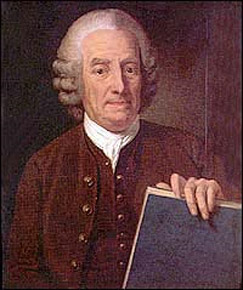People seem a bit unclear about heaven’s landscape – is it a
tropical garden with fruit for the picking, or is it a place of fluffy white clouds and harp music?
They are also divided on how to get there. Is it by accepting the forgiveness brought to mankind by Jesus on the cross (the Protestant version)? Or is it by doing the things God has told us to do through holy books and churches (the version for Catholics and most other monotheists)?
But this much seems to be agreed: It is a paradise and a reward, and anyone who gains entry will be happy.
But does that all make sense? It seems someone could be a thoroughly nasty person, full of hatred for others and love of himself, and still go to heaven for saying or doing specific, sanctioned things. And consider: Would he be happy? Say this man's greatest pleasure has been fleecing people out of their money and laughing at them for their stupidity -- what, now he’s supposed to hang out eating grapes with these same pathetic losers? Worse, he’s not allowed to run any scams, trick them, laugh at them, nothing! This goody-two-shoes “love and harmony” garbage makes him gag. What kind of heaven is that?
Swedenborg’s take on heaven is quite different. It stems from the idea that we are what we love: that our deepest affections and feelings determine our true character, not what we’ve done or even the thoughts and ideas we have. After we die, Swedenborg says, our affections come to the surface so that everyone can see them, and then we are in a sense free to associate with anyone we want to. So naturally we find people with similar affections so we can live together and share the things we love.
Heaven, then becomes a state where good people can share their lives with other good people. Even better, they share their lives with others who love the same specific good things, and can work on those good things together. This flows out as what Swedenborg calls "uses," work that is important and that is a delight to everyone involved.
There is much, much more that could be said; Swedenborg includes an entire book on the subject. Here are a few key points:
- People are married in heaven; in fact, the pure love of marriage is the central love of heaven. Those marriages are of husbands and wives who are perfectly matched, suited to each other uniquely because of what they love and how they think. In some cases those are marriages continued from this life; in other cases couples part mutually and are led to the right partners. Swedenborg calls the love of heavenly couples “conjugial,” and says a husband and wife actually become one soul. And yes, those marriages are “complete,” with the addendum that the merging of external bodies we can experience in this life is but a faint reflection of the merging of internal bodies an angel couple experiences.
- Angels are human, not some other higher form of life; they are people who accepted the Lord’s love in this life and went to heaven after they died.
- Children who die go to heaven to be raised by angel parents. They are still human and still have free will, but growing up in heaven all but guarantees they will become angels as well.
- People’s surroundings – and even their outward appearance – are projections of what they are internally, so that both are of surpassing beauty and pleasantness, all perfectly suited to the people who are there.
- Between heaven and hell is an area Swedenborg calls the World of Spirits. People go there when they first die, and while there learn the truth about the Lord and heaven. People’s inner loves also slowly emerge while they are in the World of Spirits, so they recognize others with the same loves and begin their journeys toward heaven or hell.
- Heaven itself is in three layers. The lowest is the natural heaven, where people are in a love of following the Lord, being of service and doing the right things. The middle is the spiritual heaven, where people are in the love of other people, and from that in a love of what is true. The highest is the celestial heaven, where people are in love to the Lord, and express their ideas with the wisdom that flows from love. These layers are mirrored in hell, with those in pure love of self and hatred of the Lord in the deepest hells.

Who (or What) is Swedenborg?
The ideas on this site are based on the works of Emanuel Swedenborg, an 18th-century Swedish scientist and theologian. Swedenborg claimed that his religious writings, the sole focus of the last three decades of his life, were done at the behest of the Lord himself, and constituted a revelation for a successor to the Christian Church.
In keeping with Swedenborg’s own statements, modern believers downplay his role as author, attributing the ideas to the Lord instead. For this reason they generally refer to Swedenborg’s theological works as “the Writings,” and some resist the label “Swedenborgian” as placing emphasis on the man rather than the message.
Since “the Writings” would be an unfamiliar term to new readers, we have elected to use the name “Swedenborg” as a label for those theological works, much as we might use “Isaiah” or “Matthew” to refer to books of the Bible. The intent, however, is not to attribute the ideas to Swedenborg, any more than we would attribute the divinity of the Bible to Isaiah the man or Matthew the man.
So when you read “according to Swedenborg” on this site, it’s really shorthand for “according to the theological works from the Lord through Swedenborg.” When you read “Swedenborg says,” it’s really shorthand for “the theological works of Swedenborg say.”
